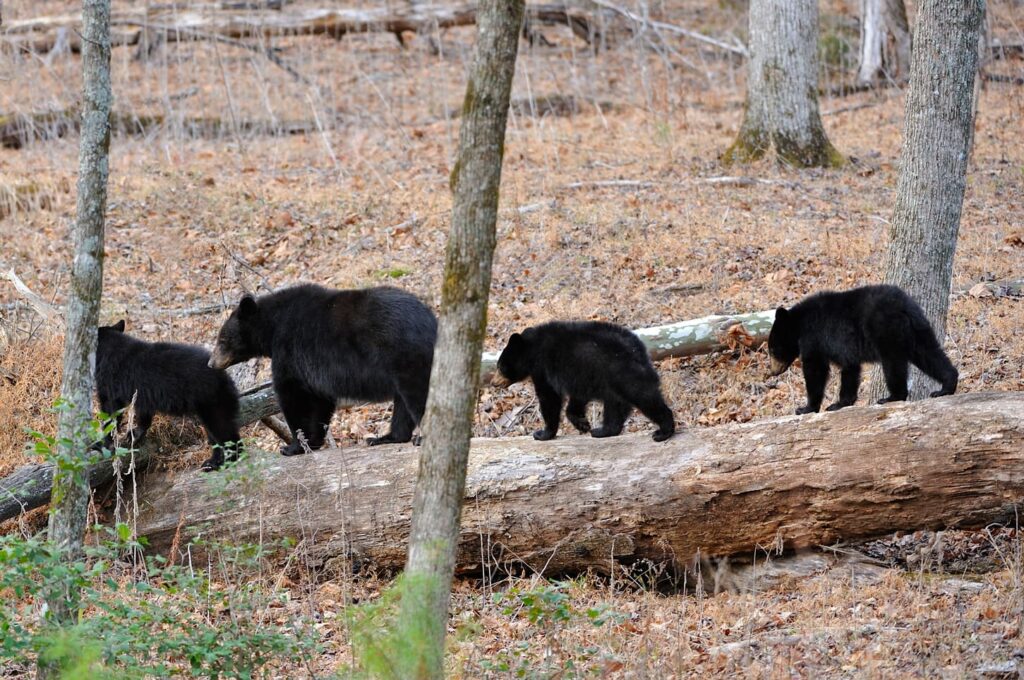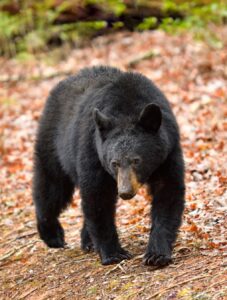Species Profile: Black Bear, Fast Facts, Trivia, & Management Tips:

Overall, gamekeepers are less likely to face black bear issues than with other predator species. However, that’s changing in some areas where bear sightings are historically less common. Black bear (Ursus americanus) populations are on the increase, particularly where management and habitat restoration efforts are in place. Gulf coast states, Florida in particular, is experiencing an increase and recently held a special hunt. In turn, the public, hunters and land managers are experiencing encounters and sometimes conflicts.
Black bears are the most common bear species worldwide and once roamed the majority of North America’s forested regions. They provided Native American with a valuable source of hides for shelter and clothing, plus meat and fat. Their intelligence and unique traits are the core theme of many Native American legends. Early American settlers viewed them as threats to their families, livestock, crops and future. Hunting and habitat loss as woodlands were converted to farm fields and pastures decimated bear populations. By 1900, numbers had declined nearly to the point of extinction. By the mid 1900’s, bear restoration programs were implemented and hunting was either closed or highly restricted. Classified as Least Concern on the Endangered Species list, today, and estimated 800,000 bears inhabit 37 states and Canada. More states are reporting black bears where they haven’t lived in nearly 100 years.
Black bears are scientifically classified in the order of Carnivora because they have canine teeth. However, they are not efficient predators and often scavenge winter-killed animals or win confrontations with other predators (including hunters!) over carcasses. Bears capture fish, newborn ungulates (fawns, calves, etc.) and other animals, raid bird nests for eggs and young, eat bees, yellow jackets, ants and their larvae, However, primarily, they operate as omnivores. More than 85% of their diet is seasonal vegetation including grasses, forbs, buds, fruits, honey and soft and hard mast.
Hunter, wildlife manager/bear conflicts mainly occur when hungry bears damage wildlife food plots, feeders and agriculture crops. Where appropriate, flagged electric fence around food plots is recommended. Deer will easily see the fencing and learn to jump it. Install automatic feeders at least 10 feet above ground and 4 feet from the closest tree or post. Try feeding soybeans instead of corn. Keep camp food and game secured out of reach. Report sightings in new areas to your local game enforcement officer or game and fish department. Visit www.nps.gov for bear encounter safety tips.
Did You Know the Black Bear…
- A black bear’s coat color may be white, blonde, cinnamon, light brown, dark chocolate brown or jet black.
- One record book black bear weighed 902 pounds dressed and estimated at 1100 pounds live.
- The oldest recorded wild black bear lived 39 years. Average lifespan is 18 years.
- Cubs are typically born during hibernation in January or February.
- A black bear can run up to 30 mph for a short distance, has an acute sense of smell and excellent eyesight.
- The black bear is highly dexterous. It can open screw cap jars, manipulate door latches and is capable of flipping a flat rock weighing over 300 with one paw.
Join our weekly newsletter or subscribe to GameKeepers Magazine.
Your source for information, equipment, know-how, deals, and discounts to help you get the most from every hard-earned moment in the field.









